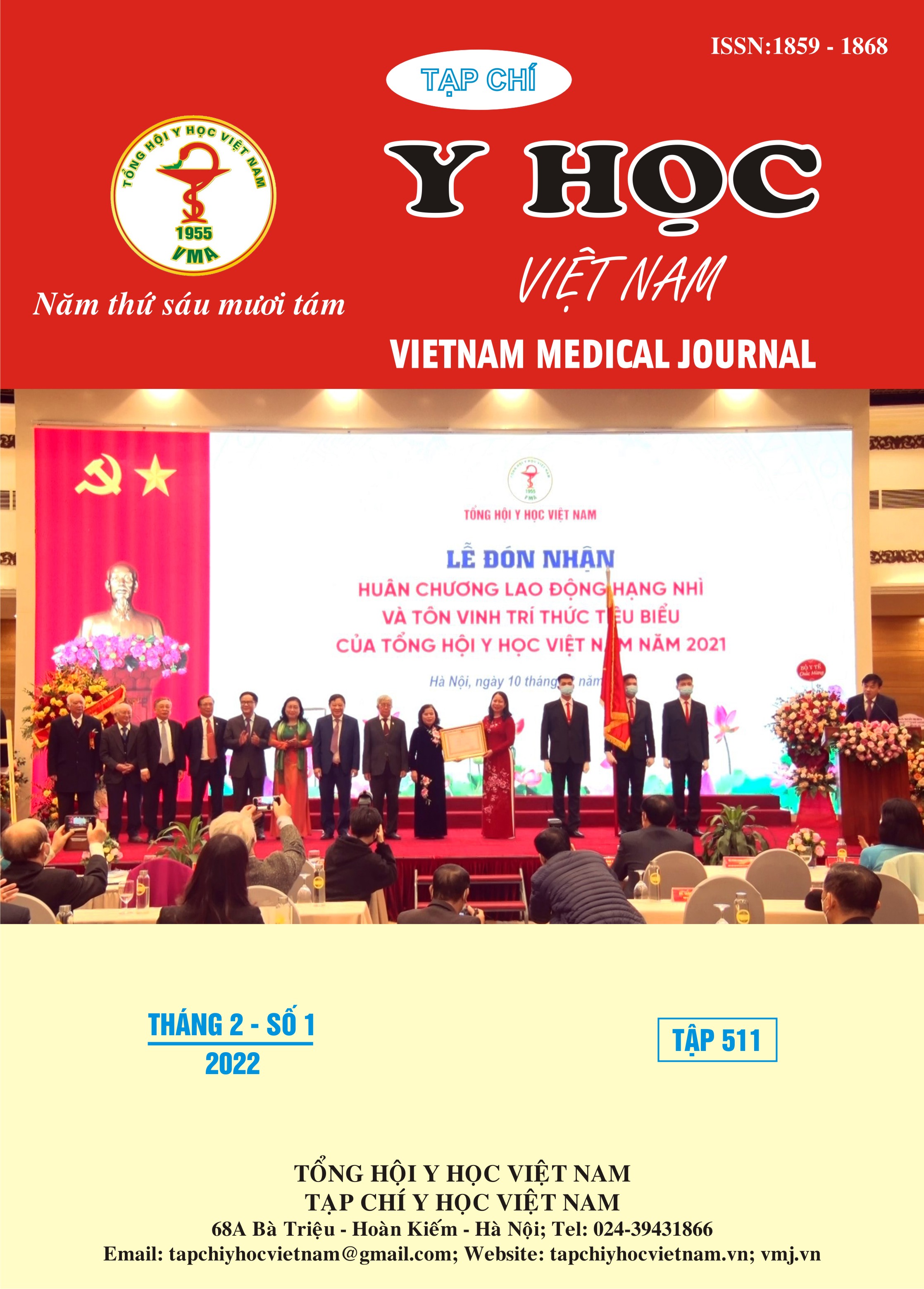STUDY CLINICAL CHARACTERISTICS AND SERUM PROCALCITONIN CONCENTRATION IN EARLY PERIOD NEONATAL INFECTIONS AT NINH THUAN PROVINCE GENERAL HOSPITAL
Main Article Content
Abstract
Introduction: Neonatal infection early period is one of the most common causes of neonatal deaths globally. Objective: Describe clinical and serum procalcitonin concentration in early period neonatal infections. Subjects and Methods: Longitudinal study on 39 infants from 1 to 7 days old, treated for neonatal infections at pediatrics department, Ninh Thuan province general hospital, from January to september 2021. Results: Clinical: Systemic: Pale yellow skin (12.8%), fever (12.8%), cyanosis (12.8%). The cardiac: heart rate ≥160 beats/minute (15.4%), CRT >3 seconds (7.7%). Respiratory: breathing rate ≥60 beats/minute (33.3%) and <20 beats/minute (12.8%), breathlessness (10.3%), apnoea (7.7%). Neurological: decreased reflexes (51.3%), poor muscle tone (30.8%), inflexibility (20.5%). Gastrointestinal: poor feeding/ give up sucking (38.5%), vomiting (30.8%), abdominal distention (12.8%). Median serum PCT concentration in the neonatal infection early period group (4.3 ng/ml) was higher than that in the uninfected group (p<0.05). The area under the curve was 0.96 (p<0.001) high or low PCT concentrations were able to identify neonatal infection early period with a cut-off 0.17 ng/ml with a sensitivity of 97% and a specificity of 86%. Conclusion: The degree of clinical manifestations is highly variable and PCT is very valuable in the diagnosis of neonatal infection early period.
Article Details
Keywords
Neonatal infections, Procalcitonin
References
2. Bùi Thị Hằng (2013), Nghiên cứu giá trị của CRP trong chẩn đoán bệnh nhiễm trùng sơ sinh sớm qua đường mẹ - thai, Luận văn thạc sĩ y học của Bác sĩ nội trú bệnh viện, Đại học Y Dược Huế.
3. Đỗ Hồ Tĩnh Tâm (2016), Nghiên cứu đặc điểm lâm sàng, xét nghiệm và kết quả điều trị nhiễm trùng sơ sinh sớm tại khoa Nhi Bệnh viện Trường Đại học Y Dược Huế, Luận văn Thạc sỹ Y học, Đại học Y Dược Huế.
4. Trần Quốc Việt (2012), Nghiên cứu một số đặc điểm lâm sàng và giá trị chẩn đoán của bạch cầu máu ngoại vi trong bệnh nhiễm trùng sơ sinh sớm qua đường mẹ thai tại khoa Nhi bệnh viện Đại học Y Dược Huế, Luận văn chuyên khoa cấp II, Đại Học Y Dược Huế.
5. Adib M., Bakhshiani Z., Navaei F., et al (2012), “Procalcitonin: a reliable marker for the diagnosis of neonatal sepsis”, Iranian journal of basic medical sciences, 15(2), 777.
6. Gendrel D., Raymond J., Coste J., et al (1999), “Comparison of procalcitonin with C-reactive protein, interleukin 6 and interferon-alpha for differentiation of bacterial vs. viral infections”, The Pediatric infectious disease journal, 18(10), 875-881.
7. Mhada T.V., Fredrick F., Matee M. I., et al. (2012), “Neonatal sepsis at Muhimbili National Hospital, Dar es Salaam, Tanzania; aetiology, antimicrobial sensitivity pattern and clinical outcome”, BMC public health, 12(1), 904.
8. Le Huy Thach, Phan Hung Viet, Le Van Thanh., et al (2021), “Study clinical, paraclinical features and the outcome of treatment for neonatal infections in early period at Ninh Thuan provincial general hospital”, Journal Of Functional Ventilation And Pulmonology, 37(12), 26-32.
9. Velaphi S.C., Westercamp M., Moleleki M., et al. (2019), “Surveillance for incidence and etiology of early-onset neonatal sepsis in Soweto, South Africa”, PloS one, 14(4), e0214077.
10. YanST., Sun L. C., Jia H. B., et al (2017), “Procalcitonin levels in bloodstream infections caused by different sources and species of bacteria”, American journal of emergency medicine, 35(4), 579-583.


